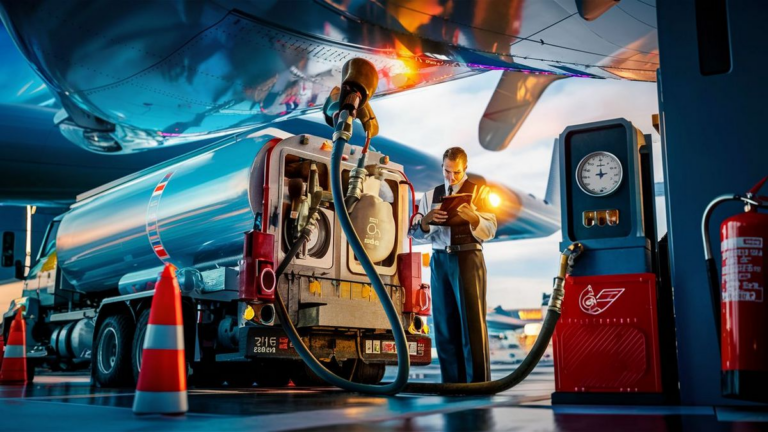When it comes to the efficiency and timeliness of air travel, one crucial aspect that often comes under scrutiny is the time it takes to refuel an aircraft. The duration of this process can vary depending on several factors, including the type and size of the aircraft, the capacity of the fuel tanks, the availability of refueling equipment, and the expertise of the ground crew.
Factors Influencing Refueling Time
Several factors contribute to the time it takes to refuel a plane:
- Aircraft Size: Larger aircraft typically have larger fuel tanks, which means they require more time to refuel compared to smaller planes.
- Fuel Capacity: The amount of fuel required to top up the tanks depends on the distance of the upcoming flight and the aircraft’s fuel efficiency.
- Refueling Equipment: The type and efficiency of the refueling equipment used by the ground crew can significantly impact the refueling time.
- Weather Conditions: Adverse weather conditions, such as strong winds or heavy rain, can slow down the refueling process due to safety precautions.
- Ground Crew Experience: A highly skilled and experienced ground crew can perform refueling tasks more efficiently, reducing overall turnaround time.
The Refueling Process
The refueling process typically involves several steps:
- Preparation: The ground crew prepares the refueling equipment and ensures that all safety protocols are followed.
- Connect Equipment: The refueling hose or nozzle is connected to the aircraft’s fuel inlet, ensuring a secure connection.
- Fuel Transfer: Fuel is pumped from the fuel truck or storage facility into the aircraft’s fuel tanks at a controlled rate.
- Monitoring: Throughout the refueling process, the ground crew monitors fuel levels and pressure to prevent overfilling or spillage.
- Disconnect: Once the desired fuel quantity is reached, the refueling equipment is disconnected from the aircraft, and safety checks are conducted.
Typical Refueling Times
While the exact duration of the refueling process can vary, depending on the factors mentioned above, here are some general estimates:
| Aircraft Type | Refueling Time |
|---|---|
| Small Regional Jet | 20-30 minutes |
| Medium-Haul Aircraft | 30-45 minutes |
| Large Long-Haul Aircraft | 45-60 minutes |
These times are approximate and can vary based on specific circumstances.
The time it takes to refuel a plane is influenced by various factors, including aircraft size, fuel capacity, refueling equipment, weather conditions, and the expertise of the ground crew. While smaller aircraft may require as little as 20 minutes to refuel, larger long-haul planes can take up to an hour or more. By understanding the factors affecting refueling time and optimizing the refueling process, airlines can minimize turnaround times and improve overall operational efficiency.
Frequently Asked Questions
Here are some common questions related to aircraft refueling:
- How does weather affect refueling time? Weather conditions such as strong winds or heavy rain can slow down the refueling process due to safety precautions. Ground crews may need to take extra care to ensure safe refueling in adverse weather.
- What safety protocols are followed during refueling? Safety is paramount during the refueling process. Ground crews follow strict protocols to prevent spillage, overfilling, and other hazards. This includes proper grounding of equipment, monitoring fuel levels and pressure, and using specialized safety equipment.
- Can refueling time be reduced? Yes, refueling time can be optimized through various means such as investing in efficient refueling equipment, providing comprehensive training to ground crews, and streamlining the refueling process. Airlines constantly seek ways to minimize turnaround times to improve operational efficiency.
The Refueling Process
The refueling process involves a series of steps to ensure safe and efficient transfer of fuel to the aircraft:
- Preparation: Ground crews meticulously prepare the refueling equipment and adhere to safety protocols before initiating the refueling process.
- Connect Equipment: A secure connection is established between the refueling hose or nozzle and the aircraft’s fuel inlet, ensuring proper fuel transfer.
- Fuel Transfer: Fuel is pumped from the fuel truck or storage facility into the aircraft’s fuel tanks at a controlled rate to prevent spillage and ensure accurate fuel levels.
- Monitoring: Throughout the refueling process, ground crews monitor fuel levels and pressure, making adjustments as necessary to maintain safety and efficiency.
- Disconnect: Once the desired fuel quantity is reached, the refueling equipment is carefully disconnected from the aircraft, and final safety checks are conducted before departure.
Optimizing Refueling Efficiency
Efforts to enhance refueling efficiency involve various strategies aimed at reducing turnaround times and improving overall operational performance:
- Investment in Technology: Airlines invest in advanced refueling equipment and technologies to streamline the refueling process and minimize downtime.
- Training and Education: Ground crews receive comprehensive training to enhance their skills and efficiency in handling refueling tasks, including safety procedures and equipment operation.
- Process Optimization: Airlines continually review and optimize their refueling procedures to identify bottlenecks and implement improvements that reduce refueling times without compromising safety.
See also:






